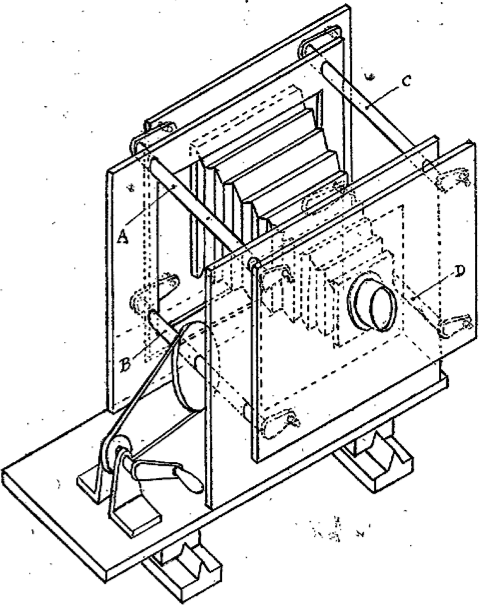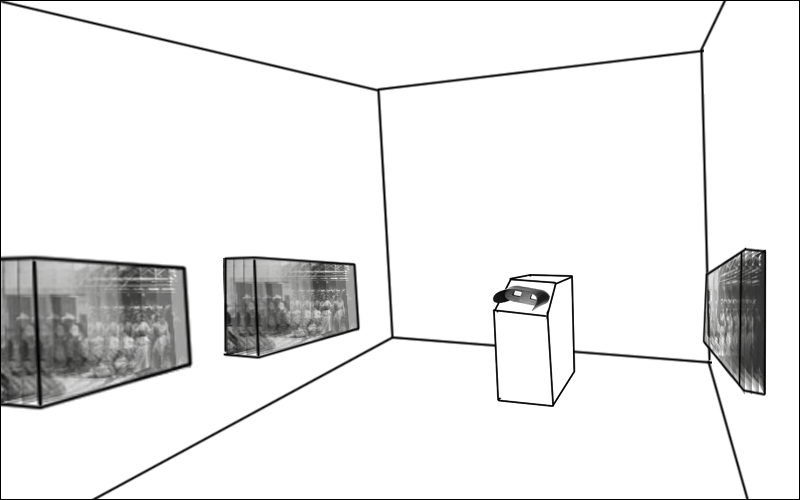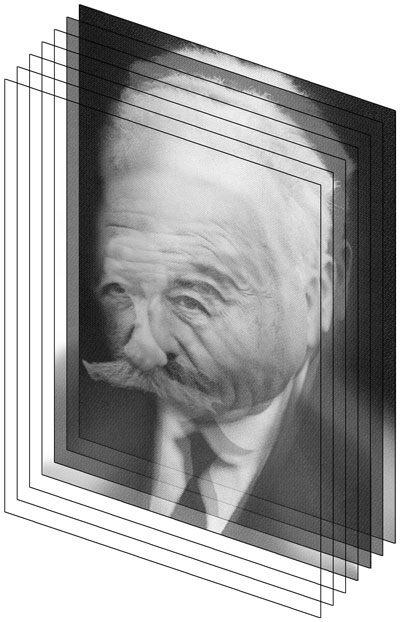PHOTO-STÉRÉO-SYNTHÈSE: LA SORTIE DE L'USINE LUMIÈRE À LYON - INSTALLATION CONCEPT
Garnet Hertz, October 2008
Photostereosynthesis - Overview
This project excavates photostereosynthesis, a lost imaging technology developed by the co-inventor of contemporary cinema, Louis Lumière. This imaging technology, released in 1920, produces dimensionally deep and multi-layered images through a series of stacked photographs. In this process, idividual frames are shot at extremely small depths of field (wide aperture) at incrementally increasing focal lengths (focus pull), which has the effect of "depth-slicing" of a dimensional space with the help of focus. Each individual exposure is printed as a transparent positive on glass and stacked to produce a composite 3D photo with the scene "entombed" in a translucent image several centimeters thick. The resulting composite image is somewhat similar to a hologram but is a physically volumetric representation.
Historiographically, this project proposes that Lumière's primary interest in the invention of cinema over two decades before was the exploration of depth, not movement. In other words, the dimensionality of photostereosynthesis (1920) is used to speculate whether Louis Lumière's goals in the invention of cinema (1895) was to primarily capture a sense of three dimensional space as opposed to a moving two dimensional image. This work does not present this as a fact, but explores it as a historical, technological and social potential. As media archaeology, it digs back into time and revises history to tell a narrative of photostereosynthesis and cinema being developed concurrently.

Usine Photostereosynthesis - Project Overview
This project will take the first film by the Lumière brothers (La Sortie de l'Usine Lumière à Lyon) and develop and explore it as a 3D entity as if photostereosynthesis (1920s) existed when it was produced (1895). The project will produce a number of visual elements that explore the film as if it was shot as a moving image with depth, printed on glass.
Usine Photostereosynthesis - Installation Description
The installation is envisioned as having two main components:
- Taking what is regarded as "the first film" - http://www.conceptlab.com/photostereosynthesis/embed/La_Sortie_des_usines_Lumiere.mov - and manually converting it to stereo/3D. The film consists of 800 frames shot at 16 frames per second, and runs for a duration of 50 seconds. This dimensionalized film would be shown in the gallery space with some form of a dual peephole display.
- Taking stills of the "3D" film, and outputting/printing them into multilayered glass blocks in the style of photostereosynthesis, similar to http://www.conceptlab.com/photostereosynthesis/img/lumiere-ortho-400w.jpg. In this printing process, a number of exposures are printed as a transparent positive on glass and stacked to produce a composite 3D photo with one frame of the film "entombed" in a translucent image several centimeters thick. The resulting composite image is somewhat similar to a hologram and is a true volumetric image.
- Also, I could write an accompanying essay to this exhibition as part of a catalogue.
Installation Sketch

Still Frame Diagram

More Information
See http://www.conceptlab.com/photostereosynthesis/ for background, sketches, and other proposals related to this project
[Garnet Hertz, 2008]